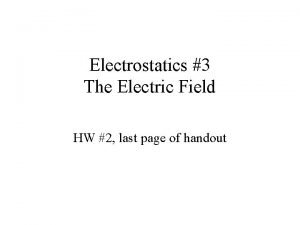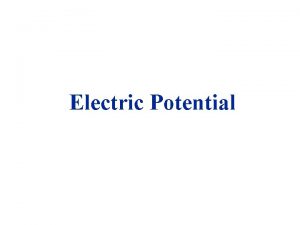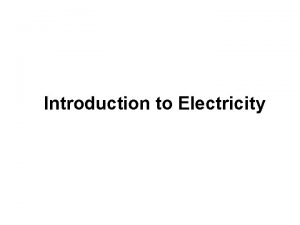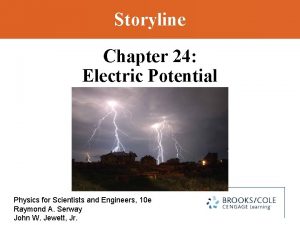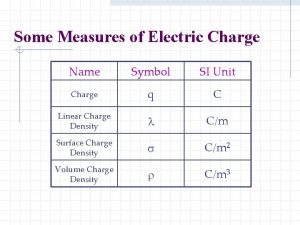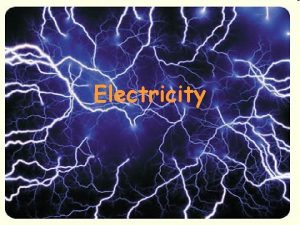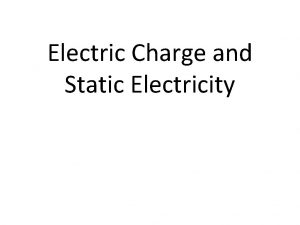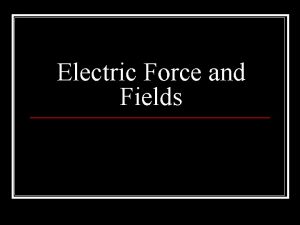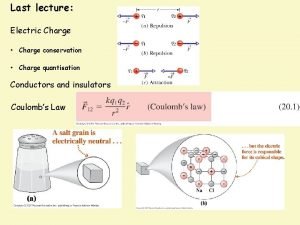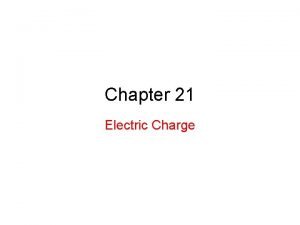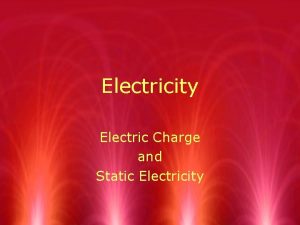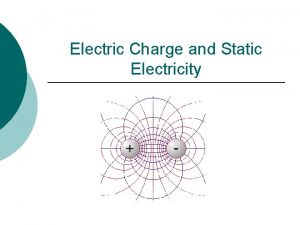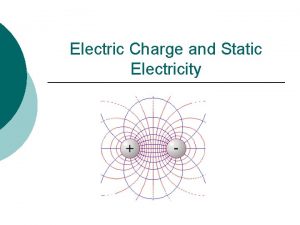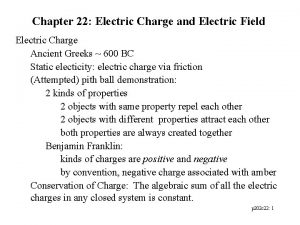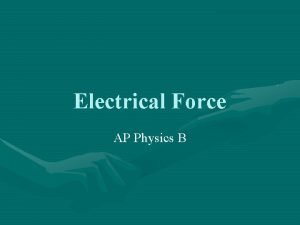Chapter 16 1 Electric Charge and Electric Force
















- Slides: 16

Chapter 16 -1 Electric Charge and Electric Force

Quick Note: • Most of this is not in the textbook.

Linking physics and chemistry • Conductors: Normally have only one electron (but upwards to 3) in their outer shell. This valence electron is easily stripped from the atom, producing current flow.

Linking physics and chemistry • Semiconductors: Have 4 electrons in their outer shell. Naturally, they are insulated. However, by adding other atoms as impurities (doping), they can become conductors.

Insulators • Insulators will generally have 5 -8 electrons (a full outer shell) and a high electronegativity (desire for electrons).

Semi-Conductors and Doping 2 types of doping are used: • N-Type: phosphorous or arsenic is added to silicon. Both have 5 valence electrons. When added to the lattice of silicon the 5 th electron cannot bond and is free to move around. • P-Type: boron or gallium is added. These have only 3 outer electrons, so when added to the silicon lattice, a hole exists.

Using P- and N-Type Semi-Conductors • On their own, neither type of semi-conductor is that great. • However, when combined, the junction between the two is very interesting. • Combining the two creates a diode • A diode allows current to flow in one direction, but not the other.

Would this diode work?

A couple examples of uses for a diodes • Light Emitting Diodes (LEDs) • Diodes can also be used to block current from flowing in the wrong direction in a voltage sensitive circuit if the battery is placed in backwards.

Superconductors • Superconductors conduct electricity with no resistance. • This means they could carry a current indefinitely without losing any energy. • First discovered in 1911 by a Dutch scientist named Heike Kammerling Onnes, who was the first person to liquefy helium and reach temperatures as low as 1. 7 Kelvin (-271. 45°C)

Superconductors • The most recent research is using hydrogen sulfide (H 2 S), which gives eggs the rotten smell. • The liquid is super-cooled and placed between two diamond plates. The mixture is subjected to 1. 5 megabars (10, 000 k. Pa) of pressure and will superconduct at -70°C. • This pressure is equivalent to half of the pressure found at Earth’s core.

Coulomb’s Law • Two charged objects near one another may experience an acceleration because of differences or similarities in electrical charge. • The closer two charges are, the greater is the force on them (where does this sound familiar from. . ? )

Formula Symbol Description Unit Name Unit Felectric Electrical Force between two particles Newton N k. C Coulomb’s Constant Newton meters squared per Coulomb squared Nm 2/C 2 q 1 and q 2 Charge 1 and charge 2 Coulombs C r 2 meters squared m 2 radius squared

Example • The electron and proton of a hydrogen atom are separated, on average, by a distance of about 5. 3 x 10 -11 m. Find the magnitudes of the elctric force and the gravitational force that each particle exerts on each other. melec = 9. 109 x 10 -31 kg mprot = 1. 673 x 10 -27 kg qe = -1. 60 x 10 -19 C qp = +1. 60 x 10 -19 C

Solution

Practice Problems • Page 556 #1 -3
 Chapter 21 electric charge and electric field
Chapter 21 electric charge and electric field Chapter 21 electric charge and electric field
Chapter 21 electric charge and electric field Electric force
Electric force Dc o/d per item charge
Dc o/d per item charge Chapter 17 section 1 electric charge and force answer key
Chapter 17 section 1 electric charge and force answer key Difference between charge and electric charge
Difference between charge and electric charge Difference between static and current electricity
Difference between static and current electricity Force on charge in electric field
Force on charge in electric field Why electric force is conservative
Why electric force is conservative Chapter 6 section 1 electric charge worksheet answers
Chapter 6 section 1 electric charge worksheet answers Symbol of coulomb
Symbol of coulomb Relationship between charge and force
Relationship between charge and force Electric field of a finite line charge
Electric field of a finite line charge Charge unit
Charge unit What is electric charge measured in
What is electric charge measured in Coloumb to volt
Coloumb to volt Section 1 electric charge crossword puzzle answers
Section 1 electric charge crossword puzzle answers







